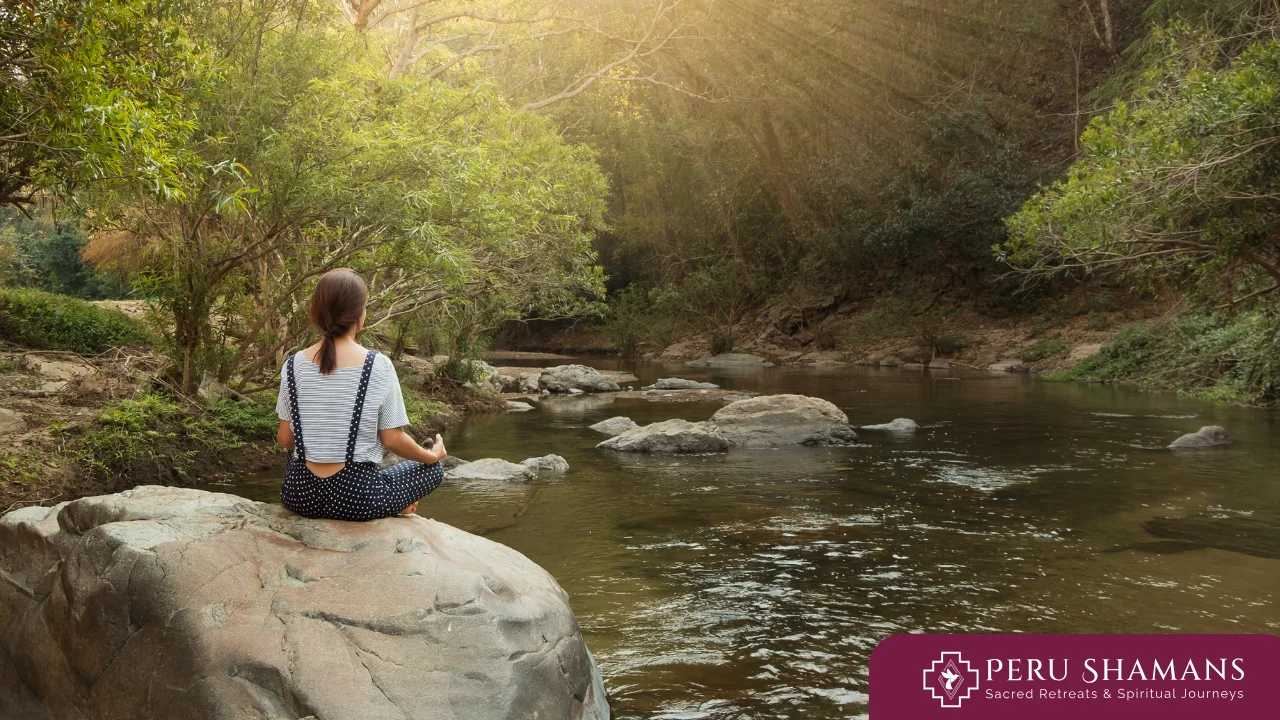This blog will explain the details about this training. We will tell you what it includes. We will also tell you why it continues to help people in modern times.
What is Shamanic Training?
Shamanic training is a process where a person learns the practices and wisdom of shamans. It is not something that happens overnight. Instead, it is a path that takes patience and dedication. The first step in this training is learning to listen to nature. Shamans believe that everything in nature has a spirit. They say that trees, rivers, animals, and stone hold energy and messages. A student learns to connect with these energies through meditation and ceremony. This connection builds the foundation of their practice.
Another important part of the training is working with plants. Shamans from Peru have used healing plants for a long time. Some of these plants are for medicine. Others are for spiritual insight. The most well-known is Ayahuasca. This is a sacred plant brew used in ceremonies. These ceremonies are part of spiritual healing Peru.
Learning from Nature and Spirits
In this, environment is the main teacher. Students spend long hours outdoors. They observe the behaviour of animals. They see the movement of the sun. They will also check the cycles of the moon. By doing so, they learn how all life is connected.
Shamans also connect with spirits through drumming and chanting. Different rituals are carried out during different sessions. These practices help them enter a trance-like state. In this state, they receive guidance and visions. Students are taught to interpret these visions. They learn to use them to help themselves and others.
Dreams also play a big role. In many traditions, these are messages from the spirit world. A student learns ways to remember dreams. They learn to write them down and understand their meaning. Over time, this builds their intuition and spiritual wisdom.
The Role of Ceremonies in This Training

They bring together music and prayer. They also bring plants and sacred objects together. Each ceremony has a purpose. It can be healing and guidance. It can also be about giving thanks to nature. One of the most powerful ceremonies is the Ayahuasca ceremony. In Ayahuasca retreats Peru, participants drink the sacred brew. This is done under the guidance of an experienced shaman. The ceremony helps people release past pain. It helps them to gain insight and heal spiritually. For students in training, it is also a way to improve their learning and connect with the spirit world. Other ceremonies may involve offerings to the natural elements. These rituals show respect for the natural forces and keep balance in life.
The Role of Mentors in Shamanic Training
It is never done alone. A student learns under the guidance of an experienced shaman called a maestro or teacher. This mentor passes down knowledge. They also pass songs and practices that have been in the community for generations. The teacher also helps the student during plant diets. Plant diets are periods of fasting and isolation. In this, the student consumes specific plants to learn their spirit. These diets are strict. They require discipline. But they are a central part of the process. Through them, students form deep bonds with plant allies that support their work.
Healing as a Core Part of Training
A shaman learns ways to heal the body and the spirit. Many health problems are believed to come from emotional and spiritual imbalances. By using plants and rituals, shamans help restore harmony. Spiritual healing Peru traditions is known worldwide. People travel from across the globe to experience them. These healing methods focus on cleansing the spirit. They help in removing negative energy. They open the path for growth. Students in training learn these techniques step by step. They practice under their mentor’s guidance.
Challenges in Shamanic Training

This task is not easy. It requires discipline and humility. You will need a strong will. Students face challenges like fasting and physical discomfort. There can be aspects like emotional release. They may need to spend weeks in silence and isolation.
These challenges are part of the learning process. They test the students’ commitment and help them grow. Through difficulties, they learn patience. They learn strength and compassion.
The Modern Relevance of This Training
Even though shamanism is ancient, it remains important today. Many people live busy lives disconnected from nature and spirit. Shamanic training helps you heal and balance life.
By learning these practices, people can find healing and purpose. They can also share this wisdom with their communities. This is why more people are joining retreats and understanding shamanic traditions. In places like Peru, where the traditions are still alive, the experience is very powerful.
Want to know more about this training? Contact Peru Shamans.
Conclusion
Traditional shamanic training is a journey of spirit, discipline, and healing. It is not just about learning techniques but about changing how one sees life. Students connect with nature, listen to spirits, and practise ceremonies that bring balance. With the guidance of mentors, they grow into healers and guides.
From Ayahuasca retreats Peru offers to the unique practices of spiritual healing Peru is known for, shamanic training continues to touch lives. It carries the wisdom of the ancestors and keeps alive a way of life that respects nature and spirit.
FAQs
How long does shamanic training take?
The time depends on the student and the tradition. Some train for years, and even a lifetime. Learning never truly ends.
Do I need to travel to Peru for shamanic training?
Training can begin anywhere. But for the best training, connect with us. We follow authentic traditions and experienced shamans who carry ancient knowledge.
Are plant diets safe for beginners?
Plant diets should only be done under the guidance of an experienced shaman. They have strict rules. They are not recommended without supervision.
Can shamanic training help with anxiety?
Yes. Many people find relief as training helps them connect with nature. It helps them release emotions.
Is shamanic training only for people who want to become shamans?
No, anyone interested in spiritual growth, healing, or connecting with nature can benefit from the practices.



4 comentarios
ai generator
Keno’s patterns are fascinating – almost like algorithms predicting outcomes! It’s cool to see AI tackling creative content now, like with AI Music Generator – transforming ideas into visuals so quickly. Accessible on any device is a huge plus for content creation!
Craig4819
https://shorturl.fm/Dwjcj
Rex1585
https://shorturl.fm/zKl7N
Aubrey3588
https://shorturl.fm/K1MxE